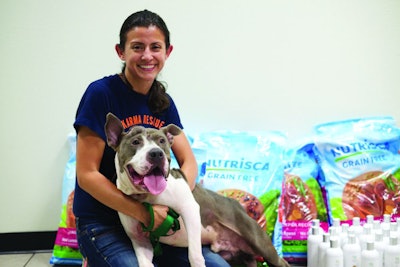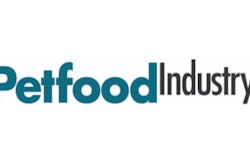
Most companies are looking for ways to engage with the communities they serve, and the pet food industry is no different. But as budgets get tighter and needs get broader, it can be difficult to navigate the waters of philanthropy to ensure all parties get what they need while making a difference.
“I’ve been in the non-profit industry a long time, and I’ve seen a really transformational change in the non-profit public/private partnership,” says Robin Keefe, CEO of Karma Rescue, a non-profit organization dedicated to saving animals in need by finding them permanent homes and providing the resources for successful companionship. “It used to be that there would be a philanthropy budget, but in large degrees those have gone away and instead now they have a marketing budget. Many times, the corporations want marketing impact. They’re looking for ways that the non-profit can raise their public image.”
Getting creative with giving back
That reality isn’t a bad one, according to Keefe; she says it’s important for all parties to get what they need out of a partnership. “I look at it as, the partnership must be a win-win,” she says. “I always feel that we’re the luckiest, but I also try to give back the best we can.”
But all factors being taken into consideration, there is a lot more need for creativity now when it comes to philanthropic partnerships.
“With many companies, it is often very difficult to find the means to financially make a donation to an organization,” says Keefe. “So, I think the creativity comes in different ways that corporations can help nonprofits that benefit everyone’s bottom line.”
See, for example, the case of Dogswell, a pet food company that has a long-standing partnership with Karma Rescue. The organization rescues animals out of shelters and then supports their adoptions into private families or into prison programs where they have dogs trained. Dogswell makes regular donations of dog food to Karma Rescue that ensure all the animals have what they need, both in the shelter and beyond.

“Our particular program strength is that we stay aligned with our animals for their lifetime,” says Keefe. “We stay attached to our adopters, checking in with them periodically, and through the life of the animal if the animal has a problem or there are economic challenges within the adopting family, we want to be there. Dogswell has helped us be there.
“Specifically, we have a program where, say the family has encountered hardship and can no longer afford the cost of feeding their animal,” says Keefe. “Dogswell has provided us with the food, free of charge, that allows us to support that program. Most recently, when we airlifted animals out of Austin (Texas, during Hurricane Harvey) that had been transferred from Houston (Texas) shelters, we brought them into Los Angeles (California) and, with our other animal rescue groups in partnership, we wanted to support their adoption in every way we can. So, we made sure every animal left with a 20-pound bag of Dogswell food.”
Dogswell’s long-time support helps Karma Rescue’s bottom line, because the organization doesn’t have to buy dog food, something Keefe says makes a powerful impact. “Anything that a rescue or animal organization needs, we have to buy,” she says. “And those are operational costs. The power of product donation is the ability for us to not have to buy those products, and to put our dollars into other things that support our program.”
Getting employees more directly involved in the giving process can make an impression, as well. “Obviously, there’s employee matching,” says Keefe. “The opportunity that for every dollar an employee donates to a non-profit, the corporation matches it. It’s a great incentive. It’s a great way of modeling by the corporation, their investment in the community, their consumers. And it’s not costly to the corporation.”
A powerful way to give back: donating time
There are other ways a company can give back that don’t involve an exchange of anything as tangible as money or product, but can make the biggest difference of all for all parties involved.
“We have had groups of volunteers from a corporation, and taken teams of employees from specific corporations, and basically have a team-building activity,” says Keefe. “Something they can do together. They might be out there on a Saturday morning with us walking our dogs that we have in boarding waiting for adoption. In the meantime, on the corporate side, they’re building a team of people.
“They might be working an event with us,” she says. “The closer we can get, the better it is.”
Thinking out of the box when it comes to volunteering time can produce excellent results. “We met with a CEO of a pet supply manufacturing company and they were going through a lot of changes,” says Keefe. “But also, true to their mission, they wanted to be able to help animals. So, we met with their vice president of sales and marketing and the CEO. And we were talking, and the CEO said, what about this? What if we give our vice president of sales and marketing to you one day a week, and underwrite her costs? Because you’re looking to strengthen your brand, and we have that talent. It was a huge gift to us.
“You just have to get really creative, because there’s not a lot of money,” says Keefe. “You have to figure out how to make it happen. Product is just one way.”
The other side: what charitable organizations can do for companies
Beyond the always-good-for-business image of being a responsible corporate citizen engaged in their community, there is more a company can get out of a philanthropic venture.
“What can we do for our social partners? We obviously try to push out on every social media platform that we have a partnership,” says Keefe. “When we talk in the press, we make sure any images include the logos of our partners. In the non-profit pet community, social media is disproportionately large compared to other non-profit missions. And the corporations can benefit from that.
“Karma Rescue is a relatively small, US$1 million organization, yet we have a quarter-million followers on social media,” she says. “It’s not in the millions of followers, but certainly, especially for local people who might want to reach a new market, we’re a great way of doing that. We help our partners.”
Another way a non-profit can give back is visibility at their events. “We have a walk coming up, and we want to put our partners’ logos on our t-shirts.” Says Keefe. “It’s not huge — if we had a table, we’d put their product on it to give out.”
According to Keefe, negotiation is key. “Plans are all up for negotiation,” she says. “You can find a way to make things work. Be creative. Share the direct costs, because at the end everybody benefits.”
Giving back helps everyone
At the end of the day, there’s plenty of opportunity and benefit to go around, it’s just a matter of finding the right fit.
“In Southern California alone, there are 40,000 non-profit organizations,” says Keefe. “Obviously, it’s too many. Most of those have very, very small budgets, and you’ve got a lot of them where every dollar really helps.”
Take the time and look around to find what’s right for your company, and don’t be afraid to get the entire organization involved, says Keefe.
“We’ve had meetings where we’ve been invited into corporations where three or four different non-profits will speak at lunchtime to employees, and they’ll blast out to the employees that, hey, come at noon tomorrow and you’ll hear from a bunch of different non-profits, and you’re going to hear about their needs,” says Keefe. “And this provides the opportunity for non-profits to get the word out for recruitment, and for the corporation to look like a great citizen, because they’re educating their employees on how to give back to the people they serve.”
For the full companion article, "Cause for paws: pet food brands giving back,” published in the November 2017 issue of Petfood Industry magazine, see www.PetfoodIndustry.com/articles/6711.
















